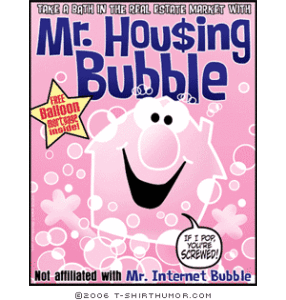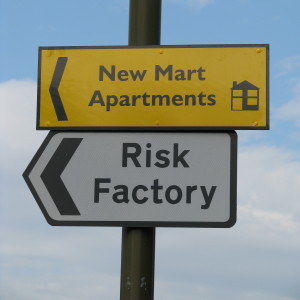There was a time not too long ago, when the consensus, long-term, safe investment was real estate. And there was really no close second place. Theoretically values always increased, so as long as you kept making the payments, you were going to cash out. Sometimes sooner, sometimes later, but cash out you would, virtually regardless of the property type. Fast-forward a few years and never has there been a greater disparity between that time, which seems so long ago, and the current state of the residential real estate market. While real estate values are actually on the increase for most of the largest demographic indicators, prices are still fluctuating here in vacation-land, and prospective investors are still watching with skepticism. Therefore, said investors bounce between the notion of moving forward and investing in a stabilizing market with great potential, and the risk of repeating the past, where values plummeted and fortunes were lost. Investors are getting better prices, but recent history has taught us that nothing is guaranteed, and despite plenty of strong evidence to the contrary the possibility still lurks that values could begin sliding once again. So there is a propensity to wait.
Meanwhile, the Millennials are staying at home longer than any generation has ever before – eschewing independence for the security of their parents basement and eventually moving into a rental property rather than buying. Again, recent history has taught a new generation that the “american dream’ of home-ownership maybe wasn’t such a great dream. Or, to be a bit less cynical, maybe it just wasn’t for EVERYONE. Maybe the new “american dream’ is to rent long-term and keep your options wide open, bouncing from region to region based on jobs and relationships. Regardless, any widespread change in behavior amongst a large demographic group provides an opportunity for another segment of the population. They can’t live in mom and dad’s basement forever, and if they are not inclined to buy, they need to live somewhere.

So it should come as no surprise that the cash-flow segment of the real estate market has rebounded historically from the Great Recession, as large-scale and small-time investors alike scoop up inexpensive duplexes and multi-unit apartment houses, and fill them with 20-somethings that are NOT dreaming of home-ownership, and families whose credit was damaged as the real estate bubble burst along with their credit-induced concept of the American Dream. Multi-family homes, apartment houses, and duplexes form the cornerstone of this niche market at a time when rental rates are skyrocketing and vacancy rates are plummeting. The concept is relatively simple, so the tendency to view it with skepticism (if it seems too good to be true it is) is a natural and important exercise.
However, this is not a get-rich-quick scheme, or an only-upside pitch. It’s just information to consider if the strain of stock market investment has begun to take its toll (the DOW is tumbling in historic fashion as I click away on my laptop). As with any traditional, legitimate investment, there is risk – and the risk is what keeps the market for such investments in check. Otherwise, everyone would do it and the market would be flooded. In cash-flow real estate investment, the greatest risk is vacancy. The numbers all rely upon keeping your rental units occupied, thus producing cash flow. As long as your tenants are paying their rent, the property continues to pay for itself and provide residual for the investor, and a long-term cushion to land on. So the risk is mitigated by investing in areas known to be stable, and with an understanding that stability is established over a long period of time. This is why real estate was a bellwether for long-term, stable investment for over 75 years. Generally, if a property or neighborhood has been producing over a long period of time, it will continue to do so as long as the property is maintained and the rent is consistent with the market. Just as you don’t buy stock that isn’t producing, you don’t buy an investment property that isn’t producing. So wipe away the concept that this is too good to be true and follow the bouncing ball.

First, the simplicity of the concept is what creates the skepticism. Cash flow investing is exactly what it sounds like. Investing in real estate intended to provide an income stream. The income can be realized in two different manners – actual cash flow recognized by extending the terms of the investment over a longer period, making lower monthly payments and utilizing the net at the end of each month as revenue. It can also be recognized as future revenue by investing the monthly dividends back into the principal on the property, shortening the terms of the loan, paying off the property quickly and flipping it – or hanging on and recognizing significantly increased revenue on the back end. Either way, to take advantage of economies of scale, the property should be at least a two-unit dwelling. Within reason, the more units the better, without slipping into the commercial realm, which frequently involves partnerships and investors just to make the initial investment.
Assume next that you can afford the initial 20% down payment and have enough cash in reserves to make any required repairs, pay the taxes, and cover any property management fees or special assessments that can be reasonably anticipated at the time of settlement. If you don’t have that kind of money, this is the wrong kind of investment. It is also assumed for this exercise that you will be able to qualify for a mortgage on an investment property. Some banks will allow you to utilize the anticipated revenue from the property to factor into your loan-to-value ratio, but you are better off assuming that you can carry the cost of the investment independent of revenue – with good reason. Even if you have done your homework and are purchasing the perfect rental property, you need to be able to withstand the aforementioned vacancy, because from time to time it will happen. If you have not been pre-qualified, you had better do so first to avoid disappointment. Even with healthy income, credit and cash reserves, banks want to be landlords even less than they want to own your primary residence if you default. So pre-qualification is sometimes trickier than on your typical primary or even second home. They REALLY don’t want to own it.
Now you just need to roll through the numbers the way you did when you purchased your first home, bought “mortgages for dummies” and learned what a balance sheet actually was. But first the supporting data:
There have been 13 multi-family homes that have sold in the Mad River Valley and Waterbury since January of 2014. That’s 18 months worth of data. The average sale price for those properties was $208,942. The average taxes on all those properties was $3824 per year, while their average annual income was around $29,833. Since many properties in this study calculated their expenses differently, I attempted to equalize as best I could, removing properties where utilities were included in rent, and discounting properties that showed no principal & interest on their profit and loss statements – in other words removing from the study properties which were long-term owner occupied and had been paid off, as well as properties where units could not be compared on a level basis – one such property had three units whose tenants paid utilities on their own, while 2 other units had higher rent that included all utilities. By doing this I was able to reasonably equalize expenses across the remaining properties in the study. I was left with 8 duplexes whose median sale price was $203,250, and rent per unit of $938/month. Annual expenses were $4000 for taxes, $3,000 for insurance and $900 in property management. There were several properties that did not report miscellaneous property expenses (such as repairs and maintenance) so I added $1,000 to the annual expenses since that was an average of the few properties which did report those numbers. Finally, assuming 20% down payment and good credit (3.0 APR today on a fixed-rate 15 year amortized note; 3.875 on a 30-year) I developed the following loan profile:
$203,250 Sale Price
-$40,650 20% down-payment
$162,600 Principal Loan Amount –
$1,122/month Principal/Interest (@3% apr over 15 years)
$765/month Principal/Interest (@3.875 apr over 30 years)
Annual Property Expenses
-$13,464 (Principal & Interest) – 15 year amortization
-$ 9,180 (Principal & Interest) – 30 year amortization
-$4,000 (Taxes)
-$3000 (Insurance)
-$1,000 (Repairs and Maintenance)
-$900 (plowing, garbage, lawn care)
-$22,364 (annual property expenses – 15 year)
-$18,080 (annual property expenses – 30 year)
Annual Property Revenue
+$22,512 (rental income )
-$148.00 (cash flow – 15 year)
$4432 (cash flow – 30 year)
Obviously the 30-year amortized loan is a better model. Given the loan profile and conservative revenue forecast of the two-bedroom unit, the 15-year schedule allows for no residual income and little buffer in the event of vacancy or a major repair. On the other hand, utilizing that same conservative model (statewide average rent is significantly higher than that utilized in this small sample size) cash flow of $4432 per year is better than a 10% return on investment, and could work favorably in a 15 year model if rents were closer to the statewide average (and spectacularly for the 30-year model). Obviously it depends on the property. In the 30-year model, investing $1530 of that anticipated cash flow back into the principal on the loan each year (that’s two extra payments per year) will still leave you with $2902 revenue and lower your loan commitment from 30 years to 20 – a good balance between the 15-year and 30 year schedules.

Ultimately, these are very favorable numbers. Generally a cash-flow real estate investment should yield a significantly better return than the same money would in a high-yield investment account. At $4432/year the income yield on the $40k down-payment is better than 10% annually, as compared with, say a 7-8% return if the same money were invested in the markets, yet with significantly less volatility. So start doing your homework and find that perfect property. Given the conservative nature of this study, there are some pretty good opportunities out there waiting to be had, simply because the skeptic has dominated the real estate conversation for the past 5 years.
 Recently Sold
Recently Sold